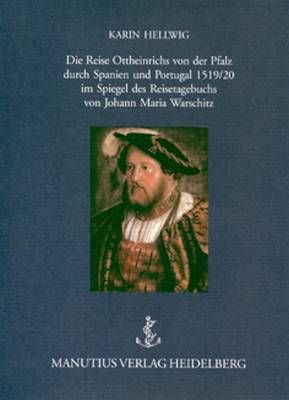Author
Karin Hellwig
Characteristics
176 pages; 18 black and white illustrations; hardcover
Publication
German; published by Manutius Verlag Heidelberg with the collaboration of the CEEH; 2010
ISBN
978-3-934877-80-1
Price
€28,85
In the winter of 1519–20 the young Ottheinrich von der Pfalz, one of the most important art collectors and bibliophiles of the Renaissance, embarked on a three-month journey around Spain and Portugal, accompanied by Johann Maria Warschitz as his secretary. Warschitz had a good knowledge of the languages and the countries they were going to visit and was entrusted with writing the travel diary. This diary, regarded as the most complete of the very rare examples of this genre from the period and the best preserved in its original version, makes Otthenrich’s the best documented journey of his day.
In it Warschitz provides information about the itineraries, stages and distances, as well as many observations on the towns and cities and their inhabitants, and the landscapes and roads. He tells of encounters and experiences, and praises the quality of the wines and the beauty of the ‘charming’ Spanish women. Hellwig begins by analysing Otteinrich’s journey and the documentation provided by Warshitz’s diary, taking as a basis a series of issues related to the experience of travel on the Iberian Peninsula in the Early Modern Age. His study is complete with a critical edition of this valuable text, which had only been circulated in manuscript version. The synoptic transcription of the original texts is in modern German.
Karin Hellwig, who holds a PhD in Art History from the Free University of Berlin, worked for more than three decades at the Zentralinstitut für Kunstgeschichte in Munich. Her research is focused on Early Modern Age art theory in Spain and Italy (La literatura artística española del siglo XVII, 1996/1999), Spanish seventeenth-century painting (with important essays on Velázquez and Murillo) and travel around Spain in the Early Modern Age. She has also devoted many studies to art historical literature of the 1800s and early 1900s (Von der Vita zur Künstlerbiographie, 2005) and is editor of the volume Spanien und Deutschland. Kulturtransfer im 19. Jahrhundert/España y Alemania. Transferencia cultural en el siglo XIX (2007).

